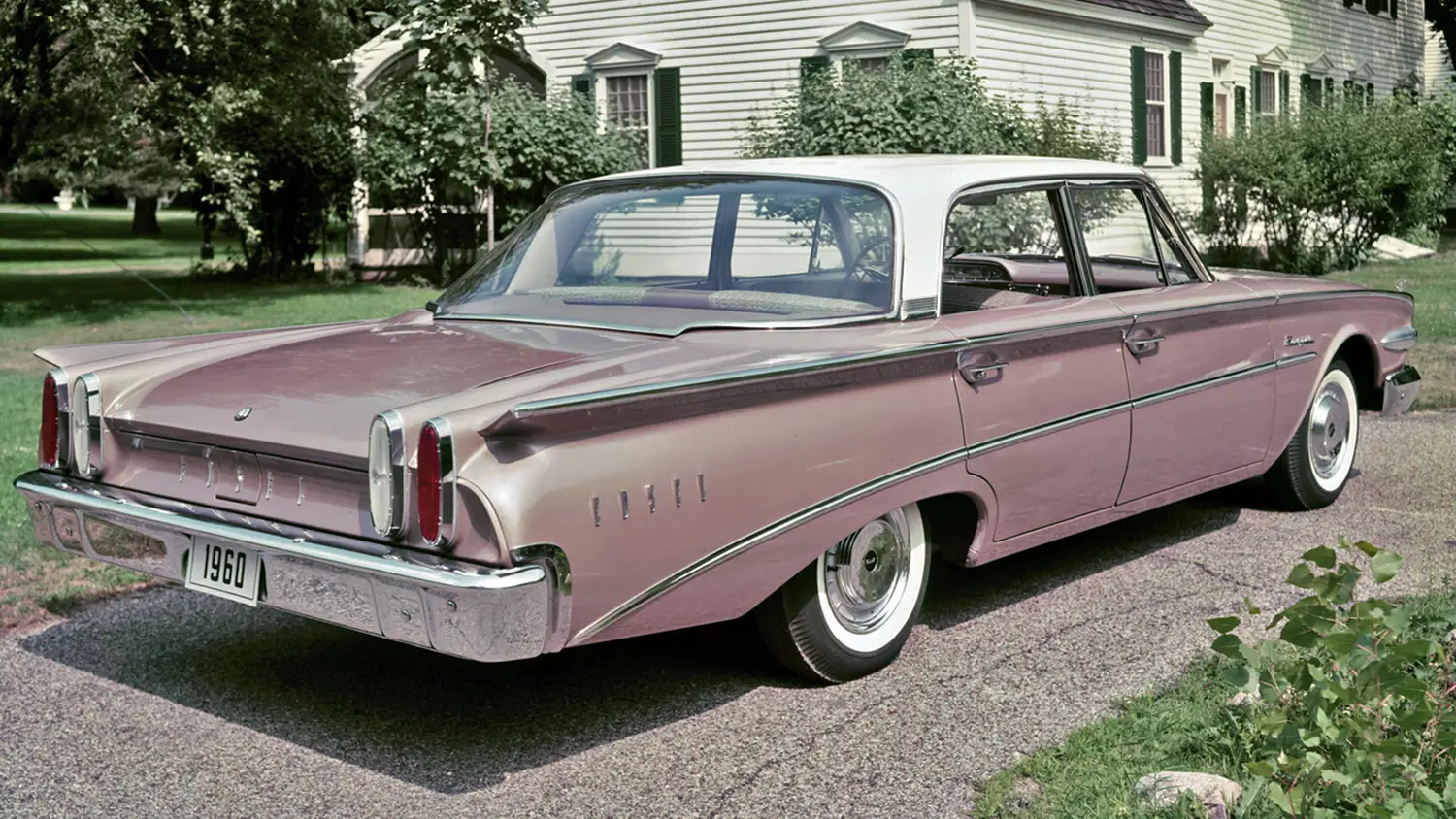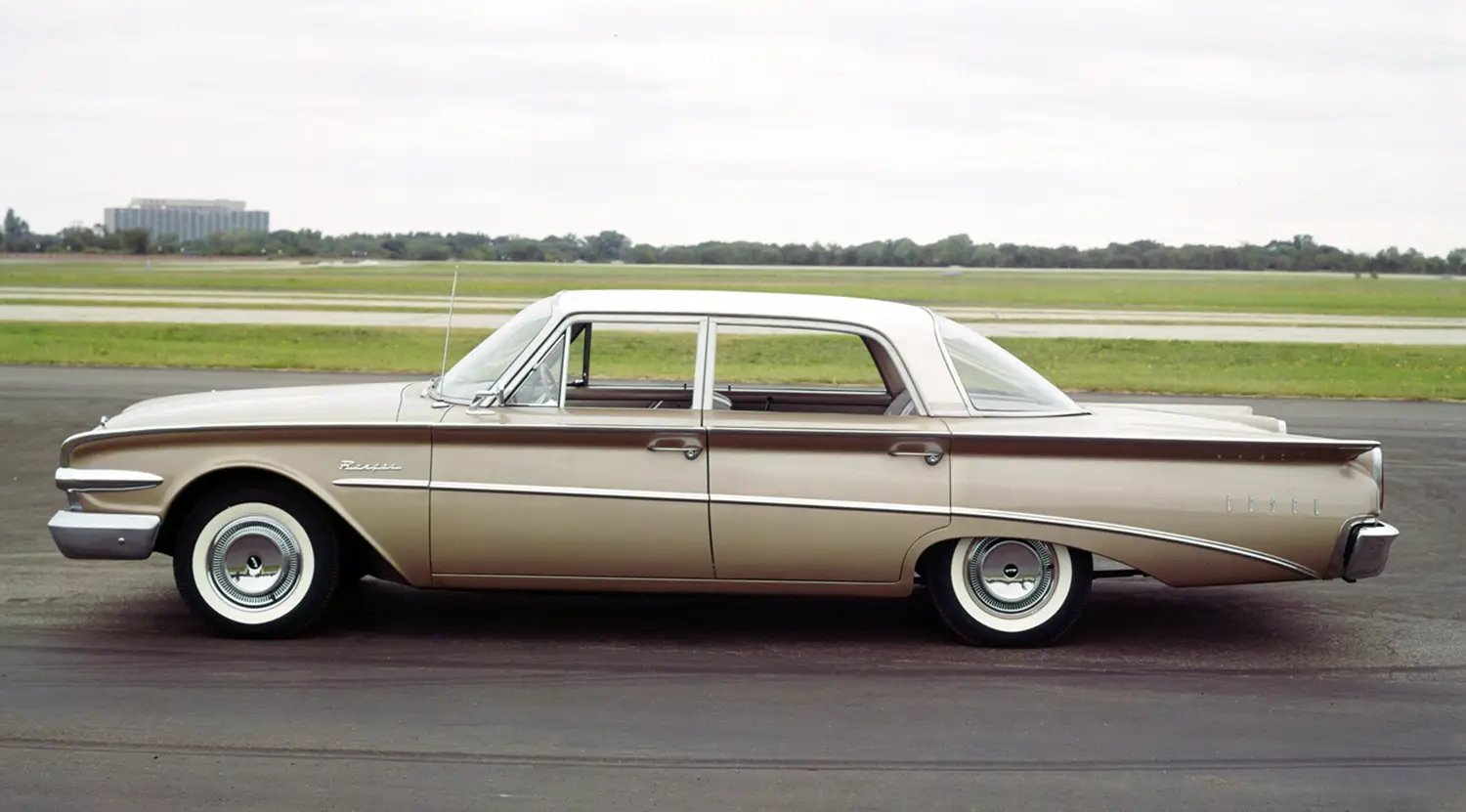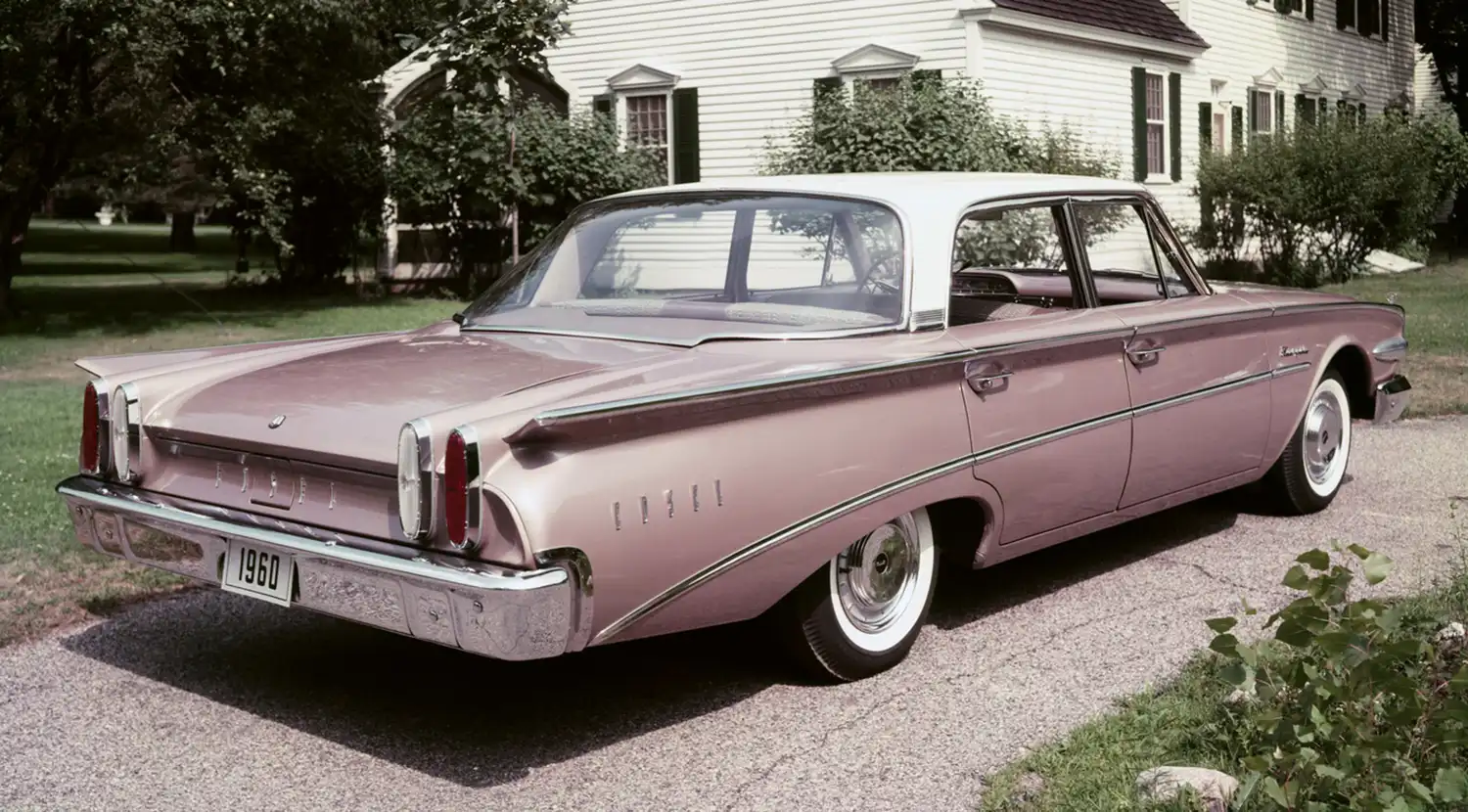
The 1960 Edsel Ranger four-door sedan is a truly unique artifact. It represents both a culmination and an end. Ford introduced the Edsel brand in 1958. They intended for it to be a new mid-tier division. It was meant to be between Ford and Mercury. The Edsel was a bold and modern idea. A combination of things led to poor sales. This included an economic downturn and marketing mistakes. The design was also a bit too radical. By 1960, the line was on the brink of being discontinued. The Ranger served as the entry-level model. This final year sedan showcased a refined style. It was a last effort to appeal to more people. Production ceased in November 1959. This makes the 1960 Ranger a very limited run car.
A More Conservative Design
The 1960 Edsel Ranger left its controversial design behind. It had a sleeker, more restrained look. The famous “horse collar” grille was gone. A wide horizontal grille took its place. The sedan also had modest rear fins. Its lines were much cleaner overall. The proportions were like other full-size Fords. This car had long overhangs and a large cabin. The rear taillights had a boomerang shape. It added a futuristic touch. The Edsel badge was now subtly integrated into the trim.

Styling for a New Era
The interior was also simplified. It offered better visibility. The cabin was more comfortable. A more straightforward dash layout was there. The car was much easier to look at. The new styling was a welcome change. It was an effort to save the brand. This effort was sadly too late. The design is still a beautiful one. It shows how the brand was evolving. It was a more mature design.
Engine and Performance Specs
The 1960 Ranger Four-Door Sedan came with a standard engine. This was a 223 cubic-inch inline-six. It produced about 145 horsepower. This engine was mated to a three-speed manual transmission. It was a column-shifted model. A more powerful engine was also available. This was a 292 cubic-inch V8. It could give you up to 185 horsepower. These engines delivered decent acceleration. They were especially good for highway driving.

Driving the 1960 Edsel Ranger
The Ranger was not a muscle car. It was well-suited for daily driving. The suspension was soft and comfortable. Steering and braking were consistent. The car was very easy to drive. It provided a smooth ride. The truck could handle a lot of weight. It was a true workhorse. It was a perfect vehicle for the job.
The Legacy of the Final Edsel
The 1960 model year was very short. Production ended less than two months later. Ford produced only 2,846 Edsel Rangers in 1960. Only a small portion were four-door sedans. Surviving examples are very scarce today. These limited numbers make them notable. They attract collectors. The cars are considered transitional classics.
A Piece of History
The Edsel brand was a commercial failure. Its historical importance has grown. The 1960 Ranger represents the brand’s final run. It offers a glimpse into Ford’s experiment. Today, Edsels attract enthusiasts. They appreciate the car’s rarity. They love its unique place in history. The car tells a story about car culture. The 1960 models have a toned-down design. This makes them a fascinating blend of features.
Summary
The 1960 Edsel Ranger four-door sedan is a rare and unique car. It marked the final production year of the Edsel. It featured conservative styling compared to earlier models. It offered an optional 292 cubic-inch V8. The car had limited production numbers. This makes it a collectible piece of history.
Disclaimer: This article provides general information based on historical records. Vehicle details and specifications may vary among individual examples.
Source: Ford Heritage Vault
